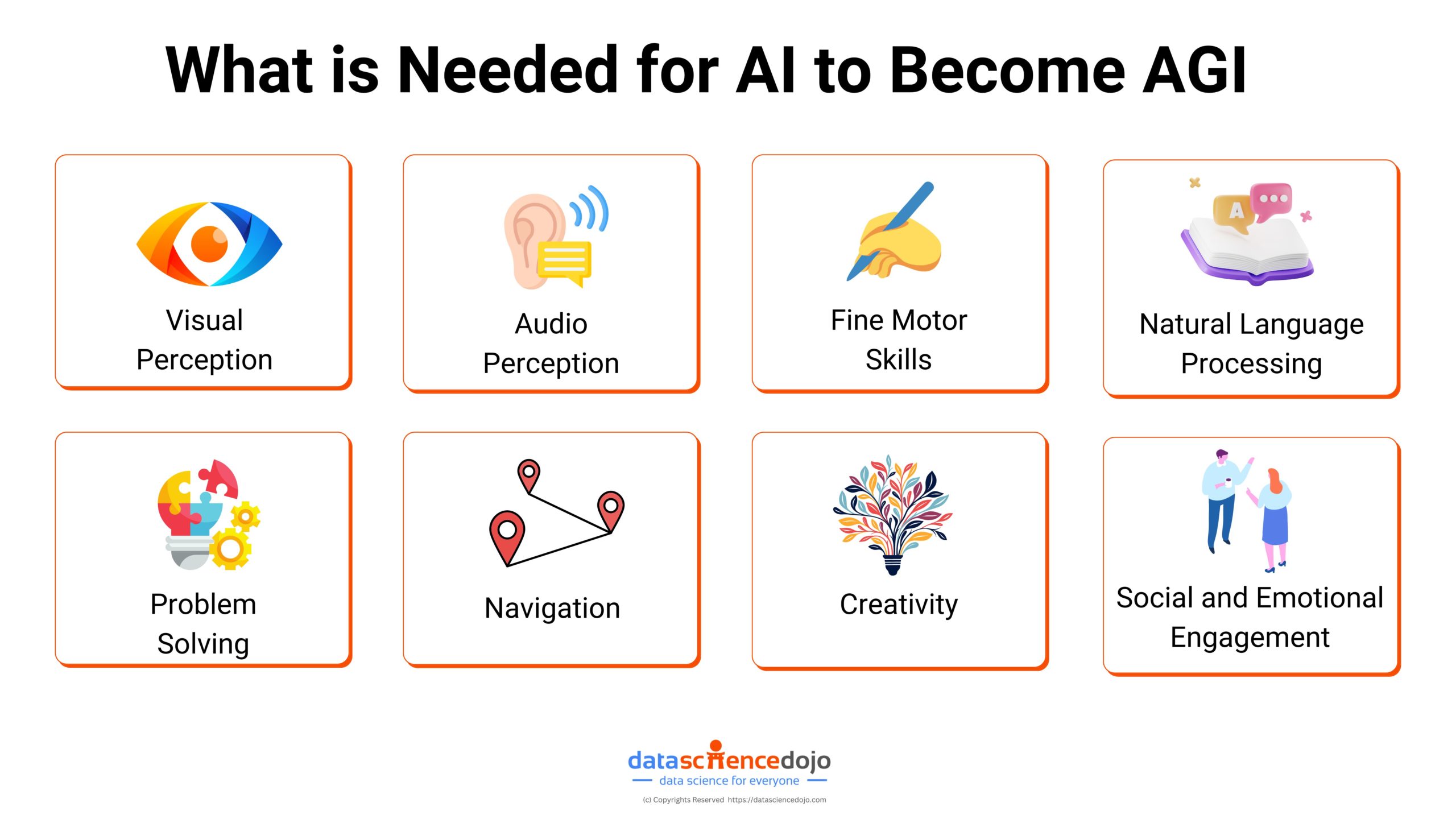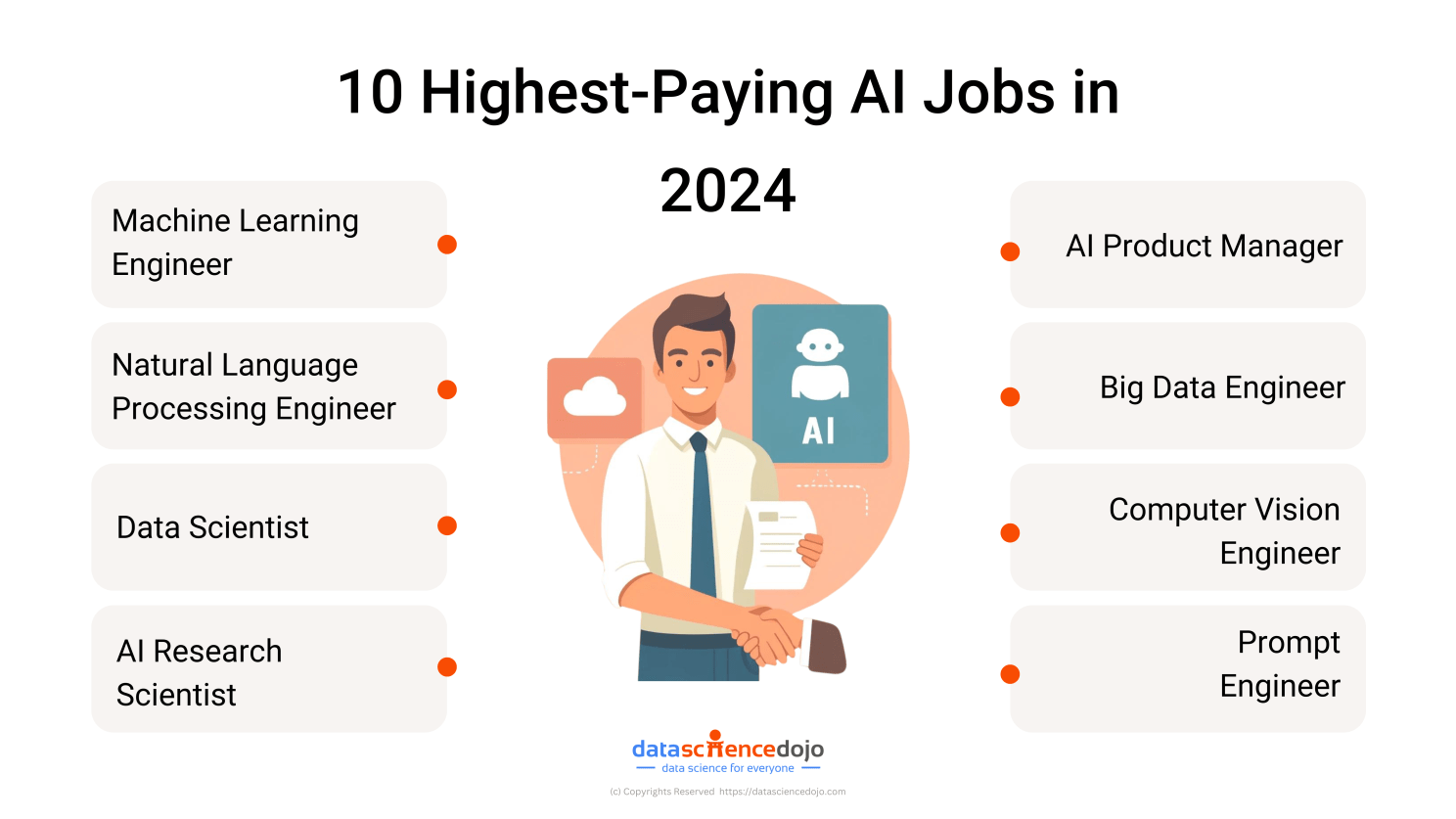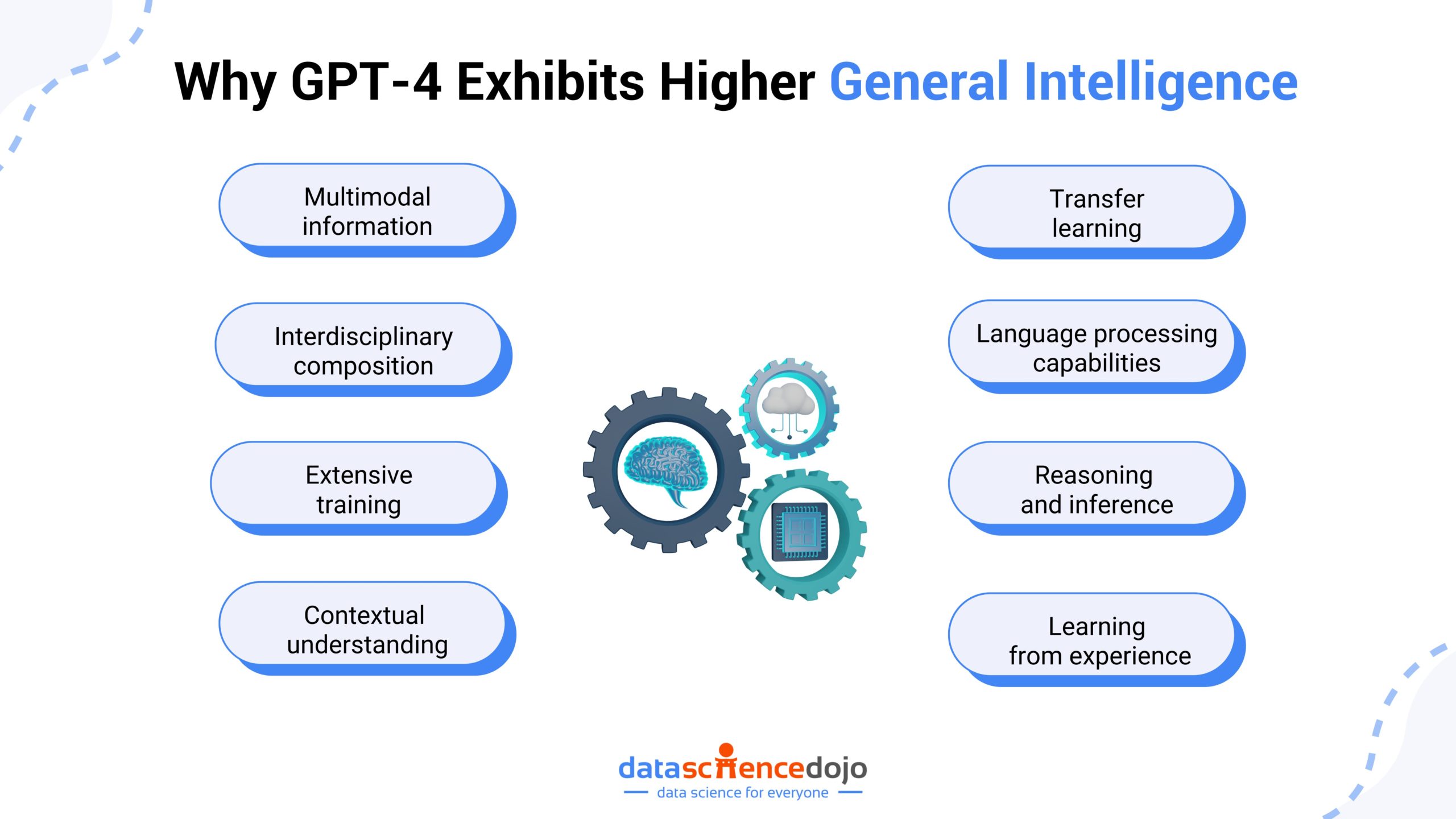Welcome to Data Science Dojo’s weekly AI newsletter, “The Data-Driven Dispatch“.
With the introduction of powerful language models like GPT-4, the once utopian concept of Artificial General Intelligence (AGI) has surged to the forefront of today’s technological discourse.
While the contemporary language models show sparks of AGI and are powerful enough to change our society and the economy entirely, we’re still far from what constitutes Artificial General Intelligence.
However, it is a fact that the language model uprising has got us thinking:
- What exactly is AGI?
- Can we reach it? If yes, when? If not, then why not?
- What happens when we reach there?
Dive deeper into this week’s dispatch to get these questions answered for you.

What Exactly is AGI?
Artificial General Intelligence is the theoretical form of AI capable of understanding, learning, and applying knowledge across a broad spectrum of tasks, much like how a human does.
“The first ultraintelligent machine is the last invention that man need ever make” – I. J. Good
Unlike narrow AI, which excels in specific tasks such as language translation or image recognition, AGI would demonstrate a flexible, adaptable intelligence, navigating between diverse activities with human-like ease and efficiency.
Read more: What is Artificial General Intelligence? Key Capabilities, Challenges, and Research
How Do We Build Artificial General Intelligence?
Shane Legg has dedicated his career to the pursuit of intelligence. Collaborating with Marcus Hutter on his PhD thesis “Machine Super Intelligence,” they developed a mathematical definition of universal intelligence, measuring the ability to achieve goals across diverse environments.
At Google DeepMind, Legg has been applying these theories practically, with AI systems excelling in specific tasks like games and protein folding.
The tricky part comes next: yoking multiple abilities together i.e. “one-algorithm” generality, where one deep-learning algorithm can master multiple tasks, as seen with AlphaZero and Atari57. However, such AI must relearn from scratch for each new task.
The ultimate goal is “one-brain” generality, where AI can switch between tasks without resetting, akin to human intelligence. This is a crucial step towards AGI.
Researchers agree that advancing towards more general-purpose AI systems is essential, exploring both current technologies and innovative experiments.
How Will AI Qualify for AGI: Key Capabilities

- Versatility and Adaptability: AGI could transition between tasks as varied as writing poetry, developing economic models, or diagnosing diseases, all with a depth of understanding and creativity currently restricted to human intellect.
- Continuous Learning and Improvement: This form of intelligence would continually learn from its experiences, adapting and evolving over time without the need for reprogramming.
- Advanced Decision-Making: Artificial General Intelligence would be capable of making autonomous decisions in complex, uncertain scenarios—mirroring human judgment and reasoning.
The Turing Test, designed by Alan Turing in 1950, is a measure of a machine’s ability to exhibit intelligent behavior equivalent to, or indistinguishable from, that of a human.
Bypassing the Turing Test, AGI would demonstrate its ability to interact and reason at a human-like level, marking a significant milestone in artificial intelligence development.
Current Research and Development in AGI
Efforts to develop Artificial General Intelligence are progressing rapidly, marked by significant milestones and some controversial ventures:
- Glimpses of Generalization in GPT-4: Although primarily a specialized tool, GPT-4 has shown promising signs of broader capabilities, such as its nuanced understanding and generation of text across diverse topics without the need for special prompting, hinting at the early stages of general intelligence.
Read more: The Early Sparks of AGI in GPT-4 by OpenAI
- Symbolic and Connectionist Approaches: Researchers are exploring various theoretical approaches to develop AGI, including symbolic AI, which uses logic networks to represent human thoughts, and connectionist AI, which replicates the human brain’s neural network architecture. Read more
The connectionist approach, often seen in large language models, aims to understand natural languages and demonstrate low-level cognitive capabilities.
- The Buzz Around Q* by OpenAI: One of the more contentious and exciting developments in the AGI sphere is OpenAI’s project “Q*.” This project aims to create a scalable model that embodies general cognitive abilities more robustly than existing AI systems.
Read: A leap towards artificial general intelligence AGI – The mystery of Q*

Podcast: When Are We Reaching Artificial General Intelligence (AGI)?
This podcast is a great listen if you want to understand the current AI revolution and how close it has got us to Artificial General Intelligence.
Data Science Dojo’s CEO, Raja Iqbal, and Weaviate’s CEO, Bob van Luijt share their opinion on the timeline, challenges, and breakthroughs on the path to achieving AGI, providing a comprehensive overview of where we stand today and what the future may hold.

Shift Your Career Trajectory Toward AI
Generative AI is set to contribute $4.4 trillion to the global economy, making now the ideal time to leverage the productivity gains from artificial intelligence. If you’ve ever considered a career in AI, there’s no better moment to make the transition.
Discover the highest-paying AI jobs in 2024 and position yourself at the forefront of this transformative field.

|

Finally, let’s give it a wrap with the attention-grabbing news of the AI world.
- Meta releases the biggest and best open-source AI model yet. Read more
- The developers suing over GitHub Copilot got dealt a major blow in court. Read more
- Google research team publishes groundbreaking paper in nature, neural general circulation models. Read more
- Elon Musk claims Tesla will start using humanoid robots next year. Read more
- Microsoft’s new AI system ‘SpreadsheetLLM’ unlocks insights from spreadsheets, boosting enterprise productivity. Read more



